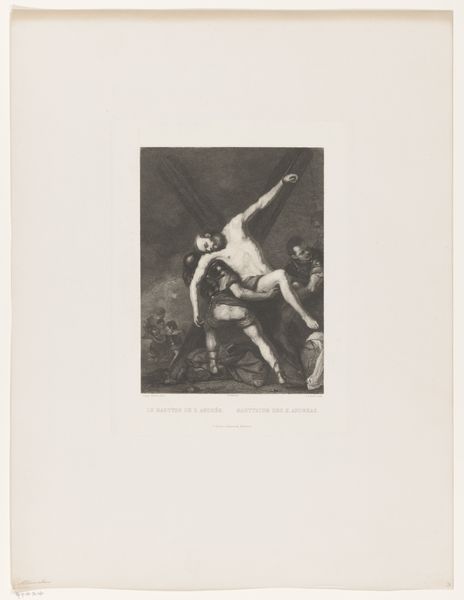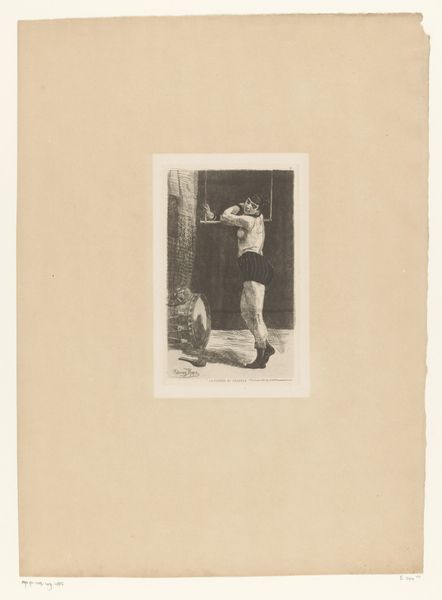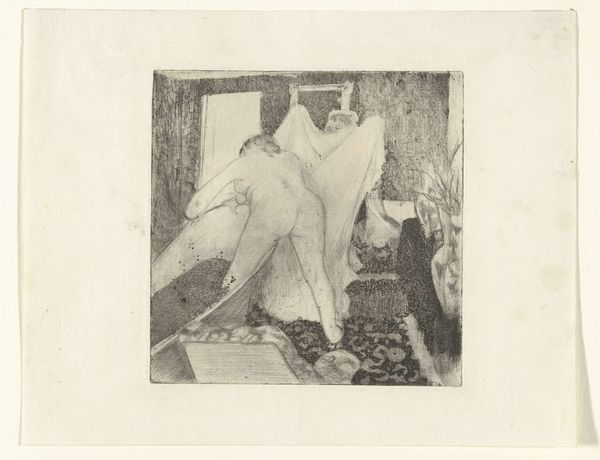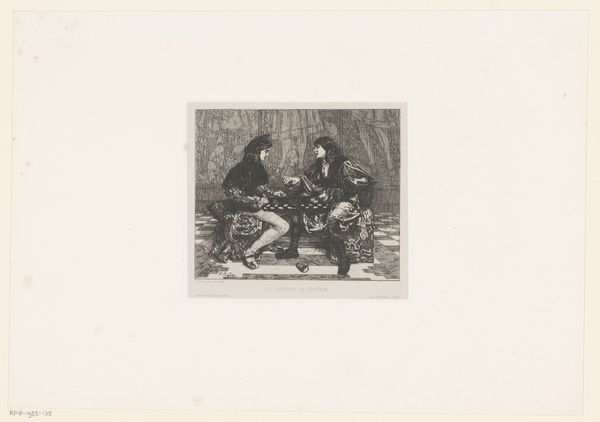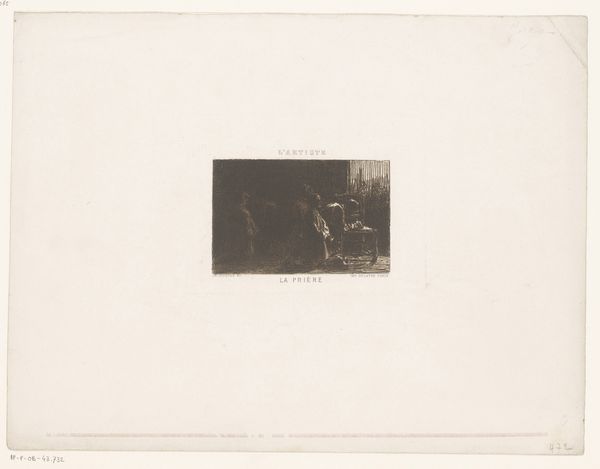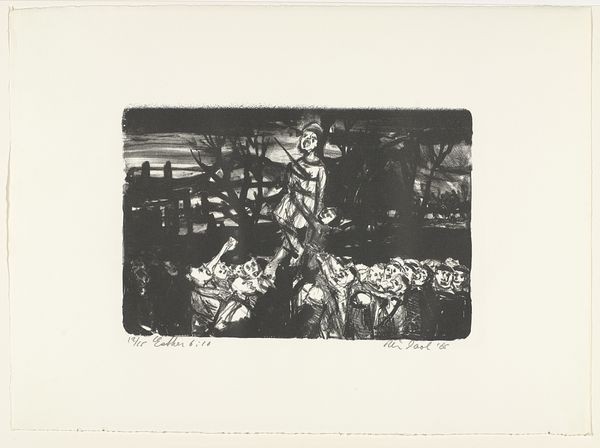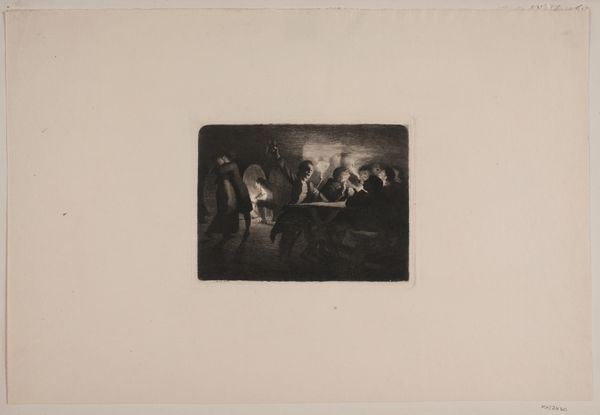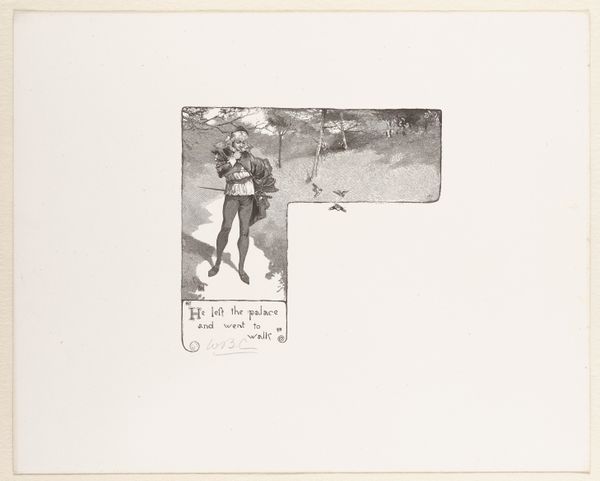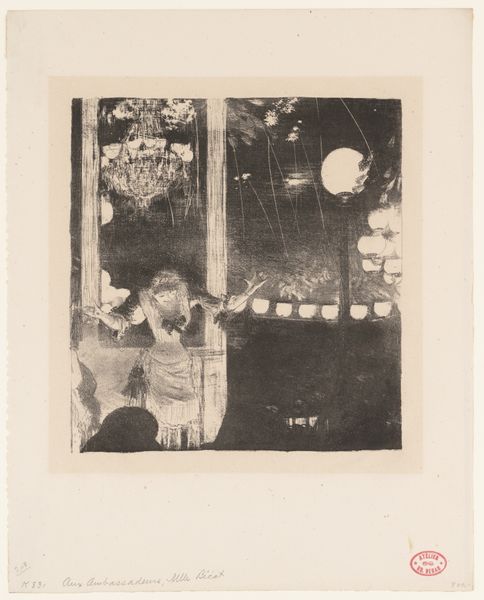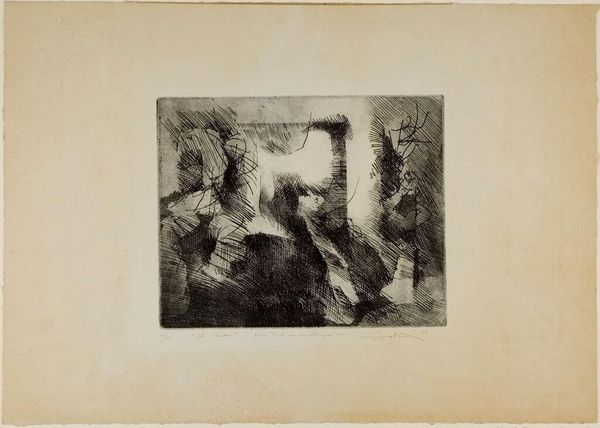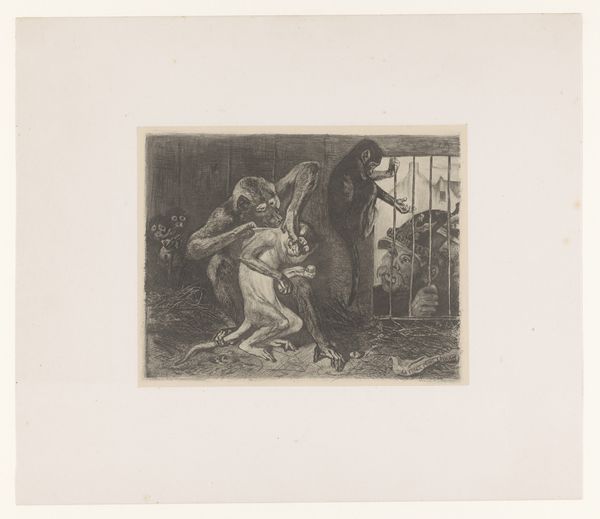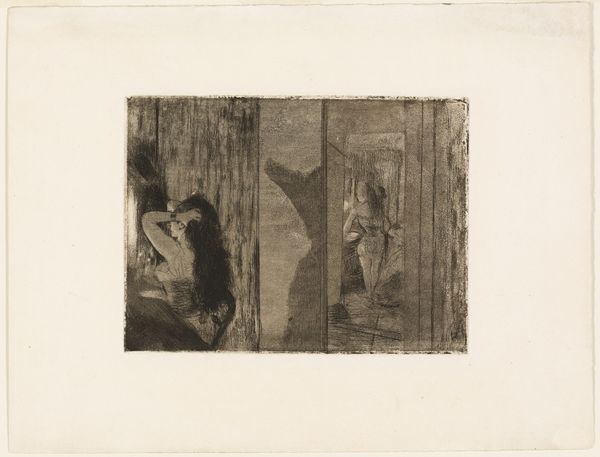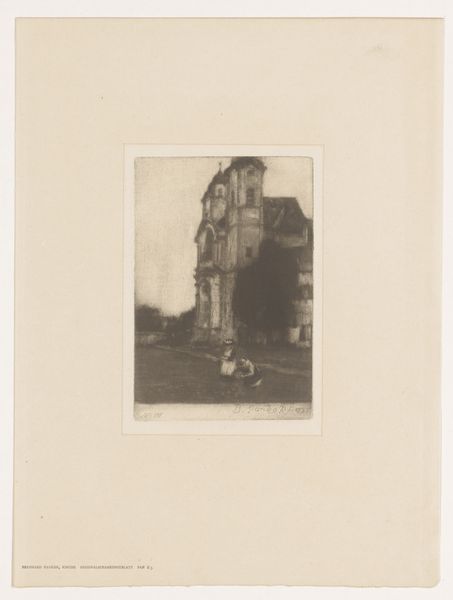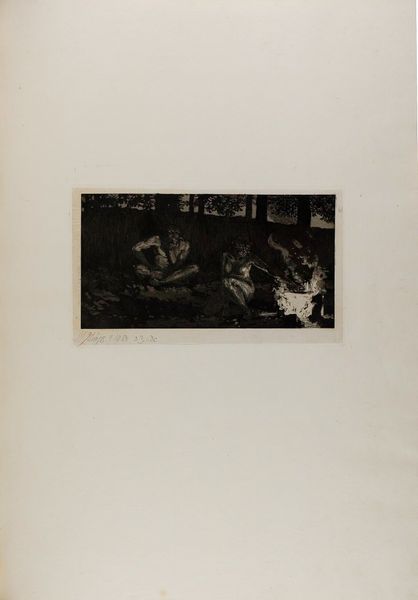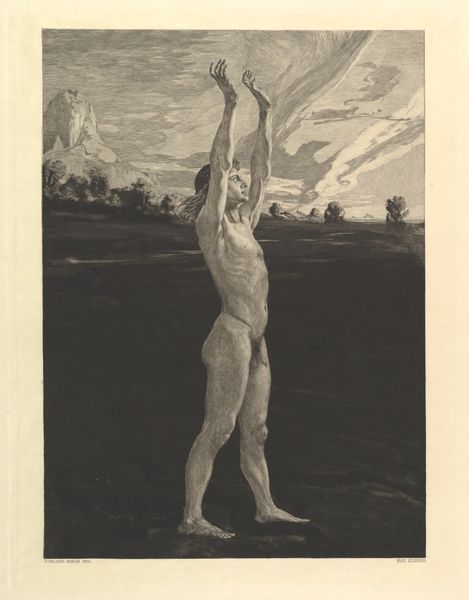
drawing, print, etching
#
drawing
# print
#
etching
#
figuration
#
pencil drawing
#
symbolism
#
history-painting
#
nude
Dimensions: Image: 8 11/16 × 13 5/16 in. (22 × 33.8 cm) Plate: 11 5/8 × 14 5/16 in. (29.5 × 36.3 cm) Sheet: 15 1/16 × 18 1/8 in. (38.3 × 46 cm)
Copyright: Public Domain
Editor: This is Max Klinger's "Evocation (from the series Brahms Fantasies)", an etching made in 1894. There's such a strange juxtaposition of elements here—a musician playing what looks like an organ next to a nude figure with a harp, all overlooking a tumultuous sea. What historical context might shed light on this unusual combination? Curator: Well, Klinger was working within the Symbolist movement, which rejected realism and embraced subjective experience. Think of it as a visual revolt against the increasing industrialization of Europe. Consider the title, "Brahms Fantasies." What do you know about Brahms’s position in musical circles at this time? Editor: I know Brahms was a very important figure in late Romantic music... a very emotional time in music history. Curator: Precisely! Klinger created this portfolio of prints as a tribute to the composer. Now, consider the social role of art music at the fin-de-siècle. It wasn't merely entertainment, it was viewed almost religiously, as a source of spiritual truth in a rapidly changing world. And what about the depiction of the nude figure? Editor: Right, I suppose it ties into the symbolism too. Is the figure meant to be a muse, or an allegorical figure related to music? Curator: Likely both. The nude, along with the turbulent sea, evokes a raw, untamed emotion, typical for Romantic art. And think of the performative aspect – someone needed to play the music, as someone needed to pose. Also, the location, The Met in New York, shows it is meant for public appreciation. These are charged themes, all intended to prompt intense introspection in the viewer. Editor: So the combination of these historical and artistic ideas tells us it’s not just a strange image, but one full of social meaning and a desire to challenge viewers. It is quite interesting to hear that these kinds of arts also shaped public opinion in its time! Curator: Indeed, by grappling with his symbols, we can unpack a richer, deeper appreciation.
Comments
No comments
Be the first to comment and join the conversation on the ultimate creative platform.
